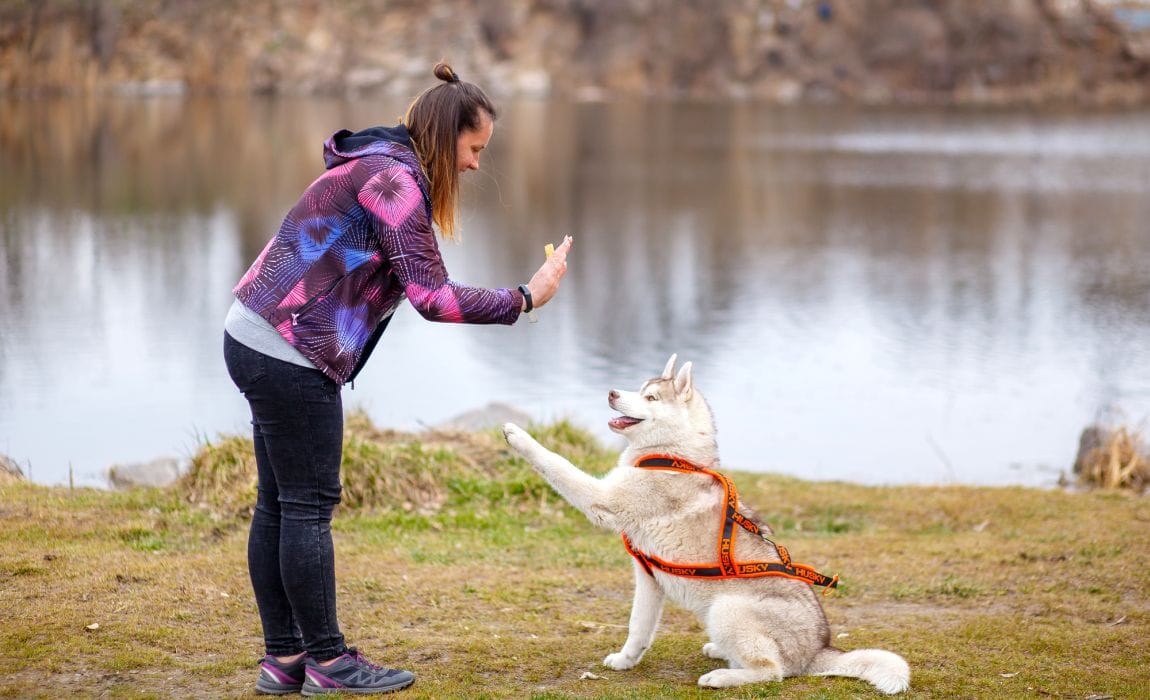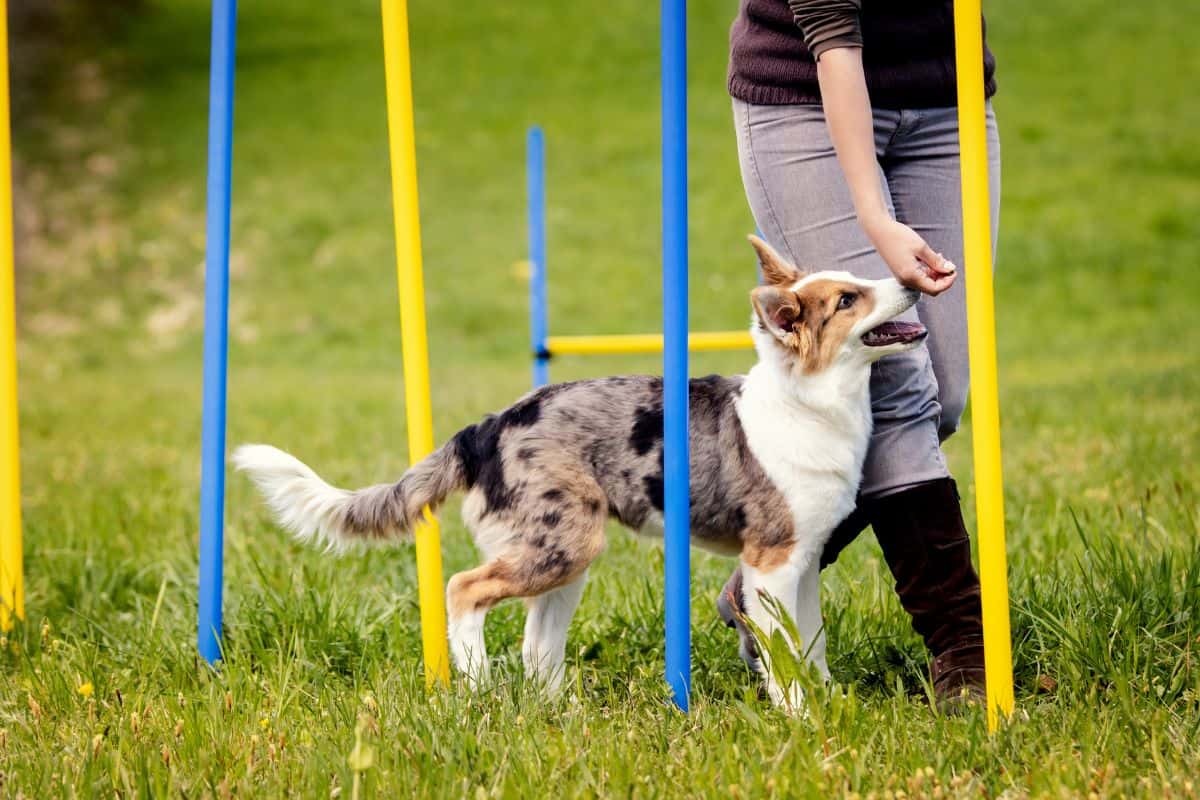Leading Dog Educating Methods Every Proprietor Should Know

Favorable Reinforcement Strategies
Utilizing favorable support techniques is necessary for effective dog training, as it fosters a relying on bond in between the trainer and the canine. This technique focuses on satisfying preferable habits instead of penalizing undesirable ones, creating an environment conducive to finding out. Benefits can include deals with, appreciation, or play, which motivate pets to repeat the habits that make them these incentives.

Furthermore, this technique improves the canine's excitement for training sessions. They are a lot more involved and receptive when canines connect training with favorable experiences. Dog training. Past immediate habits adjustment, favorable reinforcement encourages a joint partnership in between the dog and trainer, reducing anxiety and anxiety
To make best use of efficiency, it is important to provide benefits quickly, guaranteeing the canine connects the actions with the support. Essentially, positive reinforcement methods not just yield better-trained canines but likewise advertise an unified partnership in between canine and owner.
Clicker Training Approach
The remote control training method is a highly effective technique that constructs upon the principles of favorable support by adding an unique noise to mark wanted actions. This approach utilizes a little handheld gadget that creates a clicking audio, permitting trainers to interact with their dogs in a immediate and clear manner. When a pet carries out an actions that the owner wishes to motivate, the clicker is activated, adhered to by a reward, normally in the type of deals with or praise.
The secret to successful remote control training hinges on uniformity and timing. It is crucial to click at the specific moment the wanted actions takes place, ensuring that the dog connects the sound with the action and the subsequent reward. This approach not just improves communication but also cultivates a stronger bond between the proprietor and the dog, as it urges interaction and interaction during training sessions.
Clicker training can be related to a range of actions and commands, from standard obedience to much more complicated tricks. Its adaptability and performance make it a preferred strategy among professional fitness instructors and pet dog owners alike, leading the way for a well-trained and receptive canine companion.
Leash Training Essentials
Reliable leash training is vital for making sure a satisfying and risk-free strolling experience for both pets and their proprietors. A level collar might work for some pet dogs, while others might profit from a harness that minimizes pulling.
Present your canine to the chain gradually, allowing them to discover it in a comfy environment. This includes rewarding your canine for walking next to you instead than pulling in advance.
If your pet dog begins to draw, quit strolling promptly. Furthermore, practice various strolling atmospheres to help your pet adjust to interruptions.
Regular practice will certainly strengthen your pet dog's understanding of leash decorum. Keep in mind that leash more helpful hints training is an ongoing procedure; persistence and uniformity will certainly generate the finest results, cultivating a favorable experience for both you and your canine friend.
Socialization Techniques
Socialization is an important facet of dog training that need to ideally start throughout puppyhood but can be advantageous at any age. Reliable socialization aids pet dogs create self-confidence and decreases the probability of behavior issues. To implement successful socializing strategies, reveal your canine to a selection of atmospheres, individuals, and other animals.
Begin with regulated settings, such as pup classes or organized playgroups, where young pet dogs can interact safely. Progressively introduce your pet dog to new experiences, consisting of different noises, surface areas, and tasks. Guarantee these experiences are positive and rewarding to develop a sense of security.
For adult dogs or those lacking direct exposure, start with low-stress situations. Short, favorable communications with friendly humans and tranquil dogs can create favorable organizations. Use deals with and praise to enhance preferable actions throughout these experiences.

Consistency and Perseverance
Identifying the significance of uniformity and persistence in dog training is crucial for attaining long lasting outcomes. Inconsistent training can lead to complication, making it difficult for useful source the dog to realize habits or commands, eventually hindering progression.
Dogs, like humans, learn at their very own speed. This cultivates a relying on connection between the canine and owner, urging an extra enthusiastic and willing student.
To grow consistency and persistence, develop a regular training routine, utilize the very same commands, and make sure that all relative use the very same training principles - Dog training. By doing so, you create a steady atmosphere helpful to discovering, permitting your dog to thrive and develop right into a mannerly buddy
Verdict
To conclude, efficient pet training methods, such as favorable support, remote control training, and correct chain training, are important for cultivating a healthy owner-dog partnership. In addition, implementing socialization methods and keeping uniformity and perseverance throughout the training procedure adds dramatically to a pet's general well-being. By incorporating these techniques, pet dog owners can help with the advancement of well-adjusted, loyal family pets, inevitably boosting the lifestyle for both the pet dog and the proprietor.
Amongst the most popular techniques are positive reinforcement, remote control training, and chain training, each offering distinct benefits that add to a well-behaved pop over to this site canine. As we explore these basic techniques, it ends up being apparent that grasping their subtleties can significantly influence the training experience and the canine's general behavior.Utilizing favorable support techniques is crucial for reliable canine training, as it cultivates a trusting bond between the canine and the instructor.In conclusion, efficient pet dog training techniques, such as positive support, remote control training, and proper chain training, are crucial for cultivating a healthy owner-dog connection. By incorporating these techniques, canine owners can facilitate the development of well-adjusted, loyal pet dogs, ultimately enhancing the high quality of life for both the owner and the dog.